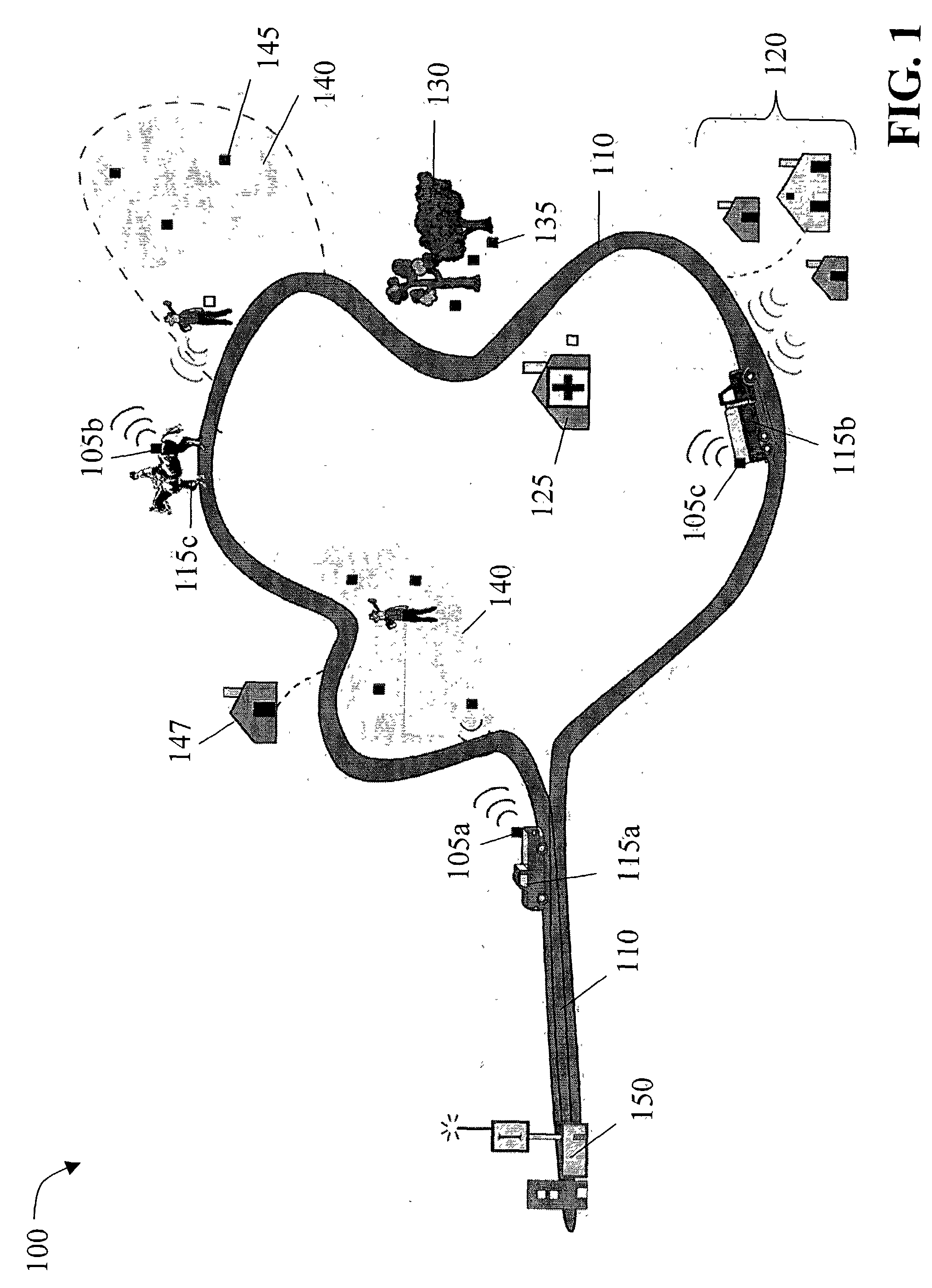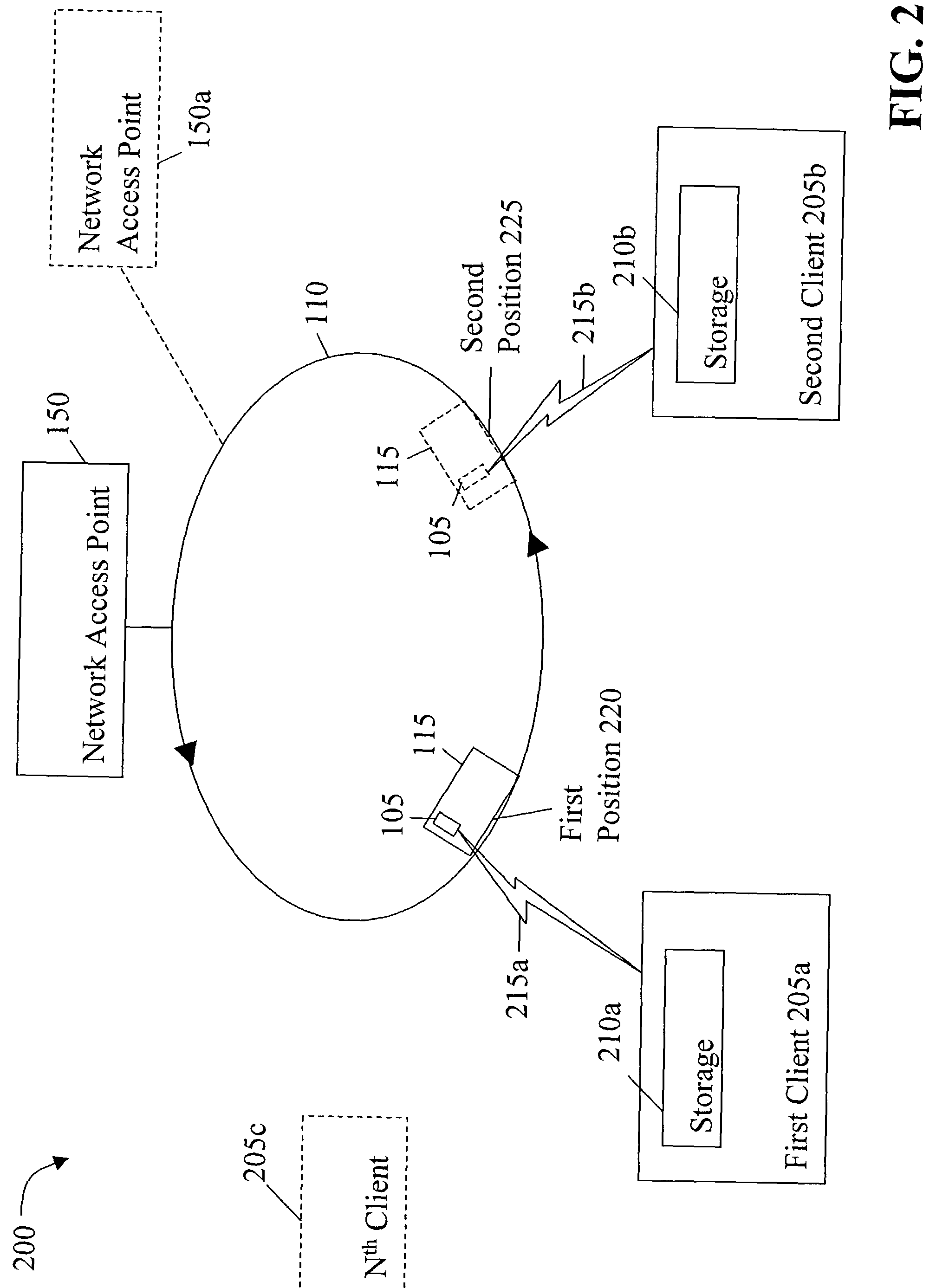Hybrid wireless network for data collection and distribution
a wireless network and wireless network technology, applied in the field of data collection and distribution, can solve the problems of large antennas, unfavorable significant improvement, and inability to provide web and readily available telephone services in such areas
- Summary
- Abstract
- Description
- Claims
- Application Information
AI Technical Summary
Benefits of technology
Problems solved by technology
Method used
Image
Examples
Embodiment Construction
[0011] The present invention recognizes that conventional communication techniques involve electronic, optical and / or electromagnetic modalities, such as cable or wireless links. These approaches require sophisticated, expensive communications infrastructures interconnecting all senders and recipients. In order to facilitate the transport of information in a low-cost, practical, robust, and scalable fashion while minimizing susceptibility to interference, the present invention utilizes a network combining the efficiency of wireless communications with the availability of existing physical transport modalities. This combined approach provides an economical way to achieve inclusive, wide-scale communications, as large communication towers and other unaffordable equipment are all but eliminated. In addition to cost, the wireless communications of the present invention can occur over a short-range radio link, thereby reducing the vulnerability to interference (e.g., RF interference, wea...
PUM
 Login to View More
Login to View More Abstract
Description
Claims
Application Information
 Login to View More
Login to View More - R&D
- Intellectual Property
- Life Sciences
- Materials
- Tech Scout
- Unparalleled Data Quality
- Higher Quality Content
- 60% Fewer Hallucinations
Browse by: Latest US Patents, China's latest patents, Technical Efficacy Thesaurus, Application Domain, Technology Topic, Popular Technical Reports.
© 2025 PatSnap. All rights reserved.Legal|Privacy policy|Modern Slavery Act Transparency Statement|Sitemap|About US| Contact US: help@patsnap.com



